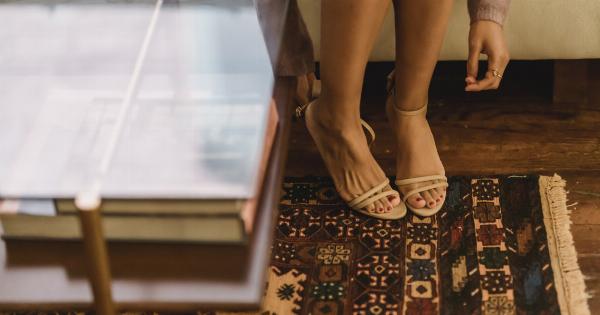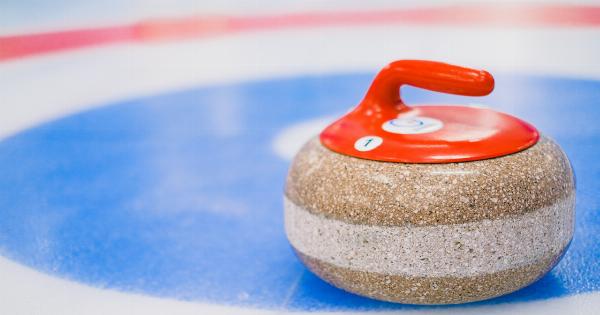Cracked heels can be a common and bothersome condition that many people experience at some point in their lives. This condition, also known as heel fissures, occurs when the skin on the heels becomes dry, hardened, and starts to split.
Not only can cracked heels be painful and unsightly, but they can also make walking and standing uncomfortable.
Fortunately, there are several effective solutions available to treat and prevent cracked heels. From simple home remedies to choosing the right footwear and seeking professional treatments, you can take steps to keep your feet healthy and smooth.
Let’s explore some of these solutions in detail:.
1. Moisturizing
One of the most crucial aspects of healing and preventing cracked heels is moisturizing the skin on your feet regularly. Applying a high-quality foot moisturizer daily can help soften and hydrate the skin, preventing it from drying out and cracking.
Look for products containing ingredients like urea, glycerin, shea butter, or coconut oil, as they have excellent moisturizing properties.
Before applying the moisturizer, it’s essential to exfoliate the dead skin cells on your heels using a pumice stone or a foot scrub. This step helps the moisturizer penetrate deeper into the skin, maximizing its effectiveness.
2. Exfoliation
Regular exfoliation is crucial for maintaining healthy and crack-free heels. Exfoliating your feet once or twice a week can help remove dead skin cells, allowing new, softer skin to emerge.
You can use a foot scrub, a pumice stone, or an exfoliating brush to gently scrub the rough patches on your heels.
Alternatively, you can create a homemade exfoliating scrub using natural ingredients like sugar, honey, and olive oil. This DIY scrub can be highly effective in sloughing off dead skin cells and promoting healthier skin on your heels.
3. Proper Footwear
Choosing the right footwear is essential for preventing and managing cracked heels. Wearing open-back shoes, flip flops, or sandals exposes your heels to more air and can cause the skin to dry out faster.
Opt for closed-toe shoes or sandals with proper heel and arch support to reduce the friction and pressure on your feet.
Additionally, try to avoid shoes made of non-breathable materials, as they can contribute to sweat and moisture accumulation, leading to dry skin. Instead, opt for shoes made of natural materials like leather or canvas that allow your feet to breathe.
4. Soaking and Foot Baths
Regularly soaking your feet in warm water can help soften the skin and make it easier to remove dead skin cells.
Consider adding a few drops of essential oils, such as lavender or tea tree oil, to the foot bath for added relaxation and antibacterial benefits.
After soaking for about 10-15 minutes, gently pat your feet dry and apply a moisturizer immediately to lock in the moisture. It’s also beneficial to wear clean, cotton socks afterward to help seal in the moisture overnight.
5. Coconut Oil
Coconut oil is a natural emollient with excellent moisturizing properties. Applying coconut oil to your cracked heels can help soften the skin and promote healing.
Massage a generous amount of coconut oil onto your heels before bedtime and wear cotton socks overnight to allow the oil to penetrate deeply into the skin.
Repeat this process daily until your heels become smooth and crack-free. You can also consider mixing coconut oil with essential oils like peppermint or eucalyptus oil for added antibacterial and refreshing benefits.
6. Epsom Salt
Epsom salt, also known as magnesium sulfate, can be highly beneficial for treating cracked heels. It works by exfoliating dead skin cells and relieving inflammation and pain associated with cracked heels.
To use Epsom salt, mix half a cup of it in warm water and soak your feet for about 15-20 minutes. The salt will help soften the hardened skin, making it easier to exfoliate.
Afterward, gently scrub your heels with a pumice stone or foot scrub, rinse, and apply a moisturizer to seal in the moisture.
7. Honey
Honey has natural antibacterial and moisturizing properties that can aid in healing cracked heels. Apply a thick layer of raw honey to your heels and let it sit for about 20-30 minutes. The honey will help soften the skin and reduce inflammation.
Afterward, gently scrub your heels with a pumice stone to remove any dead skin cells. Rinse your feet with warm water, pat dry, and apply a moisturizer. For best results, repeat this remedy a few times a week until your heels are smooth and crack-free.
8. Consult a Podiatrist
If your cracked heels are severe, painful, or do not respond to home remedies, it is recommended to consult a podiatrist. A podiatrist can assess your condition, identify any underlying causes, and suggest appropriate treatments.
Professional treatments for cracked heels may include the use of prescription-strength moisturizers, custom orthotics to relieve pressure on the heels, or specific medical procedures like debridement or laser therapy to remove dead skin and stimulate skin regeneration.
9. Maintain Good Hygiene
Practicing good foot hygiene is crucial for preventing and treating cracked heels. Wash your feet daily with mild soap and warm water, paying special attention to the heels and other dry areas.
Make sure to dry your feet thoroughly, especially between the toes, as excess moisture can promote fungal or bacterial infections.
Trimming your toenails regularly and properly can also prevent ingrown toenails and reduce the risk of developing cracked skin around the nail beds.
If you have difficulty reaching your feet or maintaining proper foot hygiene due to mobility issues or other health conditions, consider seeking assistance from a healthcare professional.
10. Stay Hydrated
Proper hydration is essential for healthy skin, including your feet. Drinking an adequate amount of water throughout the day can help keep your skin hydrated from within.
When your body is hydrated, the chances of developing dry, cracked skin decrease significantly.
Aim to drink at least 8 glasses of water per day and increase your water intake during hot weather or when engaging in physical activities that cause excessive sweating.
Overall, cracked heels can be effectively treated and prevented through a combination of proper foot care, moisturization, exfoliation, and wearing suitable footwear.
Incorporate these solutions into your daily routine to keep your feet healthy, soft, and crack-free.































